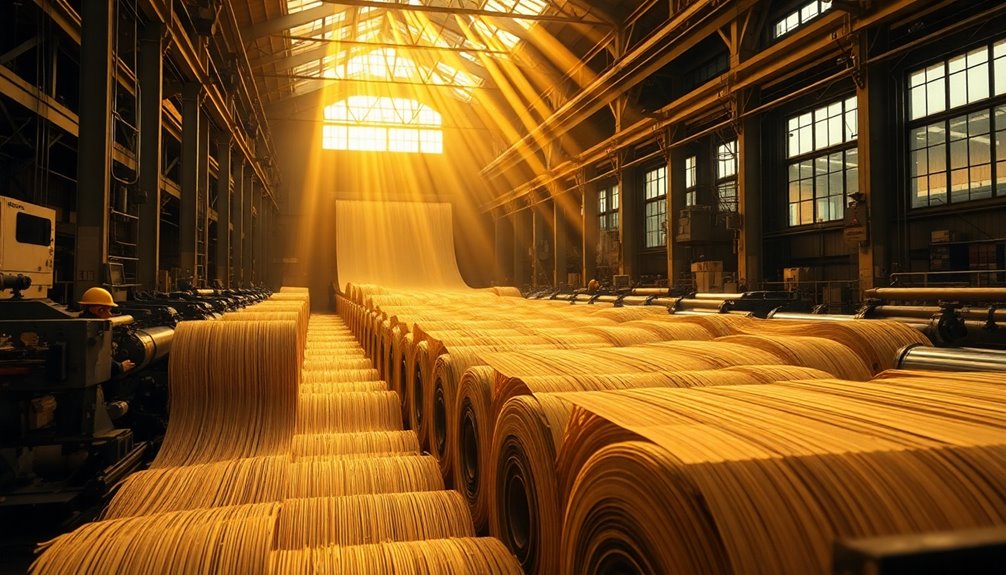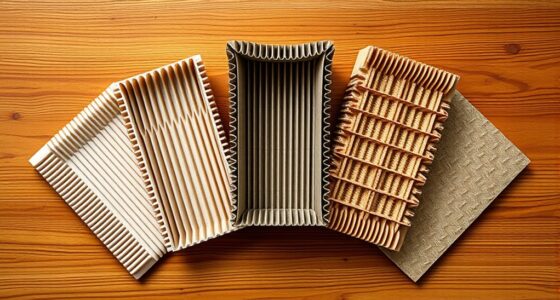High-speed corrugation lines are revolutionizing the packaging industry in ways you probably didn't anticipate. With technologies like BHS Corrugated's SPEED-Line, Schumacher Packaging achieved a staggering production speed of 431 meters per minute. This innovation allows for quick format and quality changes while maximizing overall equipment effectiveness. Additionally, the shift demands a skilled workforce, balancing job creation and potential displacement. By optimizing maintenance schedules, companies can minimize downtime and enhance efficiency. This transformation isn't just reshaping production; it's setting new competitive standards in the industry. You'll discover even more surprising insights about this game-changing technology soon.
Key Takeaways
- Schumacher Packaging set a world record of 431 meters per minute in corrugation, showcasing the potential of high-speed production lines.
- BHS Corrugated's SPEED-Line technology allows for rapid production and multiple format changes, revolutionizing manufacturing processes in the packaging sector.
- Predictive maintenance strategies are crucial, reducing downtime by 20% and enhancing overall equipment effectiveness (OEE) by 15%.
- The rise of high-speed corrugation lines creates demand for skilled labor, while also posing risks of job displacement due to automation.
- The corrugated packaging sector is projected to grow at 4% annually, indicating a shift towards innovative manufacturing and increased job opportunities in specialized roles.
Unexpected Technological Advancements Revealed
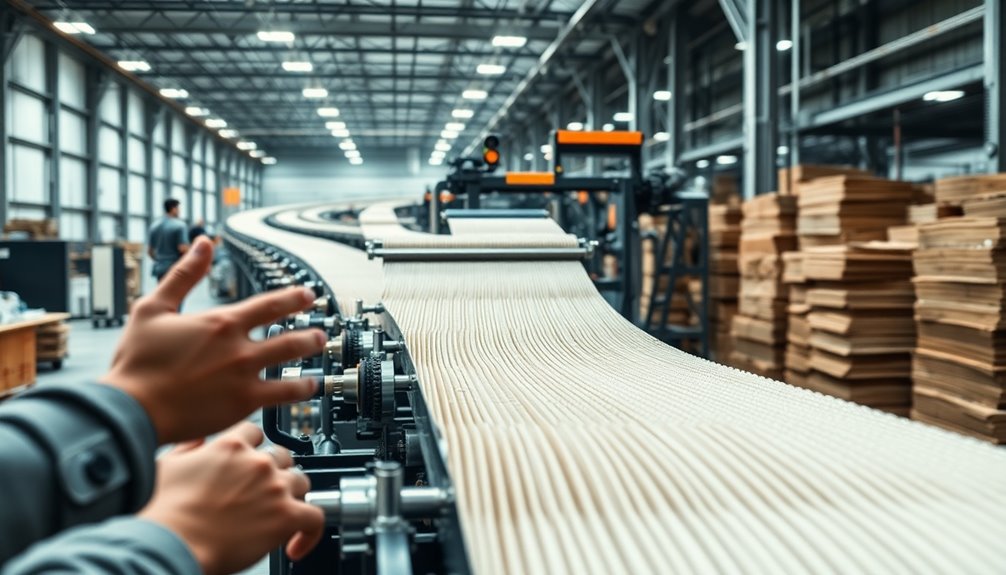
In an industry where efficiency is crucial, Schumacher Packaging's recent achievement has truly turned heads. The company set a world record with its corrugator, hitting an astounding average production speed of 431 meters per minute during an 8-hour shift. This remarkable feat resulted in the production of 207,053 linear meters of corrugated material—equivalent to around 563,365 square meters.
What's more, this high-speed production was made possible by the advanced SPEED-Line supplied by BHS Corrugated, demonstrating significant technological advancements in corrugated board manufacturing. The SPEED-Line's capabilities not only enhance production speed but also ensure exceptional operational efficiency, as evidenced by its 100% overall availability during the record-setting shift.
This level of efficiency highlights the power of industrialization in the packaging sector, showcasing how modern solutions can meet diverse market demands. The versatility of double wall production within the SPEED-Line further positions Schumacher Packaging as a competitive force in delivering innovative corrugated packaging solutions. You can see how these unexpected advancements are reshaping the landscape of the industry, setting new benchmarks for what's possible.
Corrugation Line Speed Enhancements
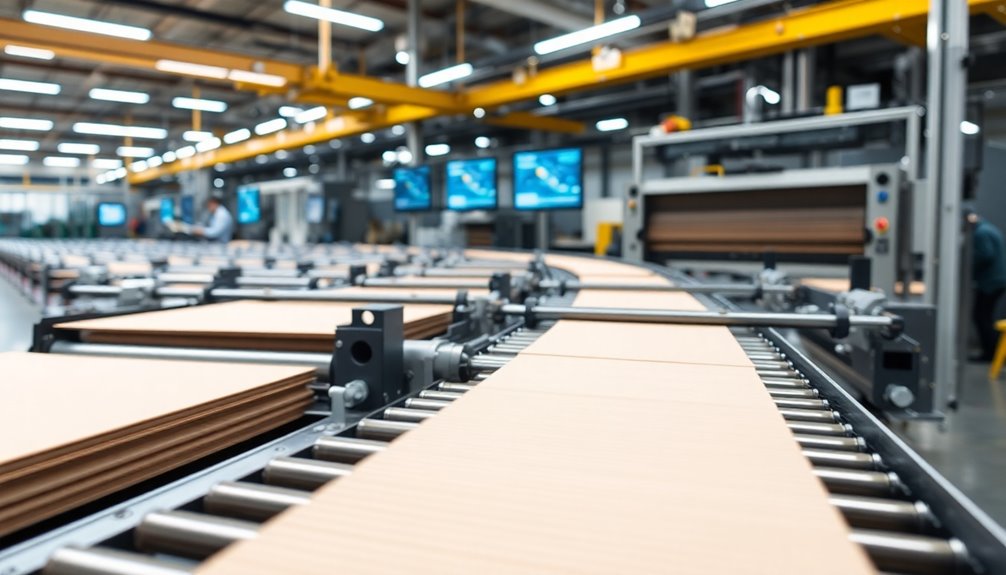
Schumacher Packaging's recent world record for corrugator speed exemplifies significant enhancements in corrugation line technology. Achieving an impressive average of 431 meters per minute during an 8-hour production shift, you can see how high-speed production is transforming the industry. A total of 207,053 linear meters of corrugated material were produced, showcasing the remarkable production capabilities of these advanced systems.
With the SPEED-Line supplied by BHS Corrugated, efficiency in the manufacturing process has reached new heights. The ability to produce nearly 61,000 linear meters of double wall material in a single shift enhances your versatility in product offerings. This means you can meet diverse customer needs without compromising on quality.
Moreover, the overall availability of the corrugator stood at an astounding 100%, demonstrating the reliability of high-speed corrugation technology. As you embrace these advancements, you'll find that not only can you increase your output, but you can also maintain the high standards your clients expect. In a competitive market, these enhancements position you to lead in both productivity and quality.
Optimize Machine Maintenance Schedules
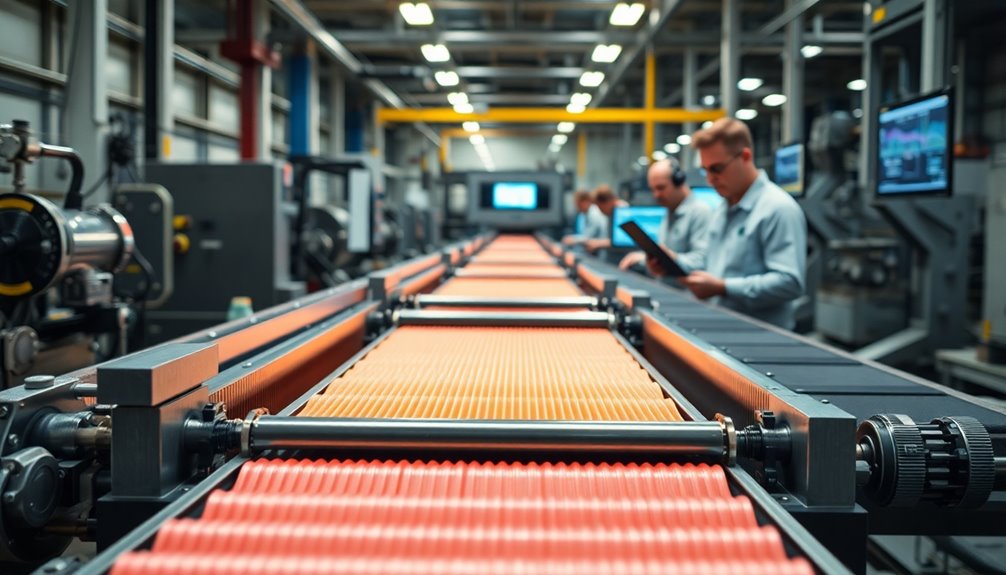
High-speed corrugation lines offer remarkable production capabilities, but to fully capitalize on these advancements, optimizing machine maintenance schedules is vital. By implementing predictive maintenance strategies, you can significantly reduce downtime by up to 20%. Utilizing data analytics and real-time monitoring allows you to schedule maintenance activities more efficiently, minimizing disruption to production.
Establishing routine maintenance schedules based on machine usage and performance data not only extends the lifespan of your corrugation equipment but also reduces unexpected failures. Machine learning algorithms can analyze historical maintenance data, helping you optimize maintenance intervals and cut costs associated with both over-maintenance and under-maintenance.
Regularly scheduled maintenance checks can boost overall equipment effectiveness (OEE) by 15%, ensuring your machines operate at peak performance. Incorporating condition-based monitoring systems enables real-time assessments of machine health, allowing for timely interventions that can lower maintenance costs by up to 30% compared to traditional methods.
Economic Impact on Workforce

The introduction of high-speed corrugation lines has transformed the packaging industry, significantly impacting the workforce. While these advanced automated technologies boost production efficiency, they also create a complex landscape for workers. The demand for skilled labor has intensified, as companies need individuals who can operate and maintain these high-speed corrugators effectively. However, this shift may lead to workforce displacement, as automation reduces the need for unskilled positions.
Despite these challenges, the rapid growth of the corrugated packaging sector, projected at 4% annually, suggests potential job creation in specialized roles. Yet, rising raw material costs and the consolidation of smaller manufacturers into larger entities could threaten job stability in certain areas. As the competitive labor market evolves, workers must adapt to technological advancements, making training and skill development essential.
Investing in ongoing education and skill development ensures that you remain relevant in this changing industry landscape. By embracing new machinery and digital tools, you can secure your place in the workforce and contribute to the packaging industry's future. Balancing these factors will be crucial for both employers and employees as they navigate this new era of high-speed corrugation.
BHS Corrugated's Record-Breaking Efficiency

As the packaging industry evolves, BHS Corrugated has set a remarkable standard with its SPEED-Line, achieving an average production speed of 431 meters per minute during an 8-hour shift. This record-breaking efficiency resulted in the creation of 207,053 linear meters and 563,365 square meters of corrugated material, pushing the boundaries of high-speed production. With an impressive overall equipment availability of 100%, BHS Corrugated demonstrated the reliability and effectiveness of its technology.
The SPEED-Line's capabilities included nearly 61,000 linear meters of double wall products, showcasing its versatility in meeting diverse manufacturing needs. This achievement not only highlights the potential of advanced machinery but also sets a new benchmark for competitiveness in the packaging industry.
As you look at the impact of this innovation, it's clear that BHS Corrugated is leading the way in optimizing efficiency and production speed. Their commitment to pushing the limits of corrugated manufacturing continues to inspire the industry. By embracing these advancements, you can stay ahead of the curve and take full advantage of the evolving landscape in packaging solutions.
Record Efficiency Boosts Production

Achieving record efficiency has transformed production capabilities in the corrugated packaging industry. Schumacher Packaging recently set a world record by averaging an astonishing speed of 431 m/min (1,414 ft/min) during an 8-hour shift on their high-speed corrugation line. This remarkable feat produced a total of 207,053 linear meters of corrugated material, showcasing the line's exceptional output.
This level of high-speed production is made possible through advanced technology supplied by BHS Corrugated, allowing for efficient double wall production. Notably, the facility maintained an impressive overall availability of 100% for the corrugator during this record-setting shift, emphasizing its operational efficiency.
The line's versatility shone through as it executed 11 format changes and 6 quality changes seamlessly within the same shift. This adaptability not only enhances production capabilities but also ensures that quality remains uncompromised. With such advancements in record efficiency, manufacturers can now meet rising demand without sacrificing performance. As the corrugated packaging industry continues to evolve, the integration of high-speed production and innovative technology will redefine the standards for efficiency and output. The future looks brighter than ever.
Frequently Asked Questions
What Is the Typical Lifespan of a High-Speed Corrugation Line?
The typical lifespan of a high-speed corrugation line usually ranges from 10 to 15 years, depending on usage and maintenance practices. If you keep up with regular maintenance and repairs, you can extend its effective life. It's important to monitor wear and tear, as well as to invest in quality components. By doing so, you ensure that your line remains efficient and continues to meet production demands for as long as possible.
How Does High-Speed Corrugation Affect Product Quality?
High-speed corrugation significantly enhances product quality by ensuring precise and consistent manufacturing processes. You'll notice that faster production rates maintain tight tolerances, reducing defects and improving strength. The advanced technology used allows for better control over variables like temperature and pressure, which directly impacts the durability of the final product. Overall, you'll find that high-speed corrugation leads to more reliable and superior-quality corrugated materials, meeting the demands of modern packaging needs effectively.
Are There Training Programs for Operating New Machinery?
Yes, there are training programs for operating new machinery. These programs often include hands-on training sessions, safety protocols, and operational guidelines tailored to the specific equipment. You'll learn how to maximize efficiency while minimizing risks. Many companies also offer ongoing support and refresher courses to ensure you're up to date with the latest technologies and processes. It's essential to participate actively in these training sessions to enhance your skills and confidence as an operator.
What Safety Measures Are in Place for High-Speed Lines?
When working with high-speed lines, you'll find several safety measures in place. First, operators must wear personal protective equipment like gloves and goggles. Emergency stop buttons are strategically positioned for quick access. Regular maintenance checks ensure machines function safely. Additionally, safety training programs help you understand potential hazards and proper protocols. You're also encouraged to follow lockout/tagout procedures to prevent accidental machine startups during maintenance, ensuring a safer working environment.
How Do Maintenance Costs Compare to Traditional Corrugation Lines?
When you compare maintenance costs, high-speed corrugation lines often show a reduction in expenses over time. While initial investments might be higher, their efficiency usually leads to fewer breakdowns and less downtime. Traditional lines, on the other hand, tend to require more frequent repairs and upkeep, driving up costs. By choosing high-speed options, you're likely to save money in the long run, maximizing your operational efficiency and profitability.

